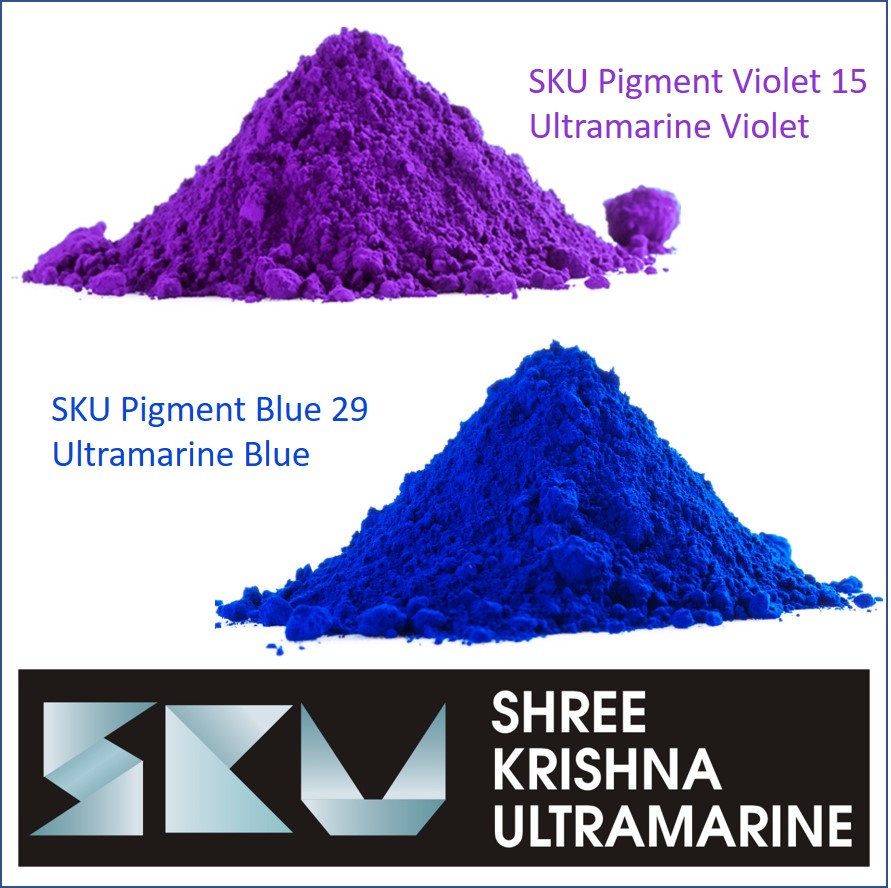Everything about Blue Pigments that gets your awareness
Ultramarine Pigments: From Ancient Art to Modern Industry

For centuries, color has shaped art, design, and industry. Among the most iconic hues, Ultramarine remains unmatched for its depth and richness. Today, companies like SKU Pigments produce high-quality Ultramarine pigments, including Ultramarine Blue, Ultramarine Violet, Pigment Blue 29, and Pigment Violet. From paints and plastics, Ultramarine has become the mainstay of modern blue pigments.
Tracing Ultramarine from Lapis Lazuli to Industry
The name Ultramarine comes from the Latin “ultra mare,” meaning “beyond the sea,” a reference to lapis lazuli originally imported from Afghanistan. For centuries, it was worth more than gold, used by Renaissance masters to paint sacred art. It symbolized wealth and divinity.
Modern chemistry made it possible to produce artificially Ultramarine pigments, bringing the once-exclusive shade into mass production. This breakthrough turned a precious rarity into a cost-effective solution for countless sectors.
Ultramarine Blue Pigments
Ultramarine Blue pigments—the synthetic form of Pigment Blue 29—are industry favorites. Known for their lasting vibrancy, they are safe, eco-friendly, and non-toxic. They are used in:
• Architectural and industrial paints for long-lasting shades.
• Polymers and rubbers, thanks to heat and weather stability.
• Publishing and packaging, where precision is vital.
• Personal care, given their skin-safe quality.
This balance of durability and eco-friendliness keeps Ultramarine Blue among the global color leaders.
Ultramarine Violet and Pigment Violet
Ultramarine Violet offers softer tones that appeal in decorative paints. Pigment Violet derived from Ultramarine is eco-safe, making it ideal for eco-friendly materials.
Its muted shade enhances interior design, while ensuring stability without chemical breakdown.
How Pigment Blue 29 Powers Industries
Pigment Blue—particularly Ultramarine Blue pigments—remains a market leader. It offers eco-friendly performance for:
• Vehicle coatings with brilliant sheen.
• Branding, ensuring consistent identity.
• Decorative plasters, adding strength and aesthetics.
This cross-sector utility ensures Pigment Blue’s staying power.
Why Industries Prefer Ultramarine
• Non-Toxic & Safe: Ideal for cosmetics and toys.
• Heat & Light Resistant: Colors don’t fade under UV.
• Eco-Friendly: Manufactured with sustainability.
• Cost-Effective: Budget-friendly industrial choice.
• Versatile: Applicable everywhere color matters.
Applications Across Sectors
1. Paints & Coatings: Durable architectural shades.
2. Plastics & Rubber: Stable in polymers.
3. Cosmetics: Skincare-safe pigments.
4. Construction: Plaster and decorative finishes.
5. Printing & Inks: Precision printing.
Why Choose SKU Pigments?
SKU Pigments leads the market, offering eco-conscious solutions in Ultramarine pigments. Their product portfolio includes:
• Pigment Blue 29 for mass production.
• Ultramarine Violet and Pigment Violet for luxury tones.
• Custom shades for specialized markets.
Their reputation is built on global reach and sustainable methods.
Final Thoughts on Ultramarine Pigments
From lapis lazuli origins to a global industrial pigment, Ultramarine has remained relevant for centuries. Whether it’s Ultramarine the timeless vibrancy of Ultramarine Blue, the subtle elegance of Ultramarine Violet, or the stability of Pigment Blue 29, Ultramarine pigments remain indispensable.
With SKU Pigments as a leading manufacturer, industries gain beauty, safety, and performance. As demand for non-toxic pigments rises, Ultramarine will remain dominant in global markets.
Common Queries About Ultramarine
1. What is Ultramarine?
A vibrant pigment from lapis lazuli, now produced synthetically.
2. What is Pigment Blue 29?
A widely used industrial pigment.
3. Where is Ultramarine Violet used?
In eco-friendly and children’s products.
4. Are Ultramarine pigments safe?
Yes, non-toxic and eco-friendly.
5. Why choose SKU Pigments?
Trusted supplier worldwide.